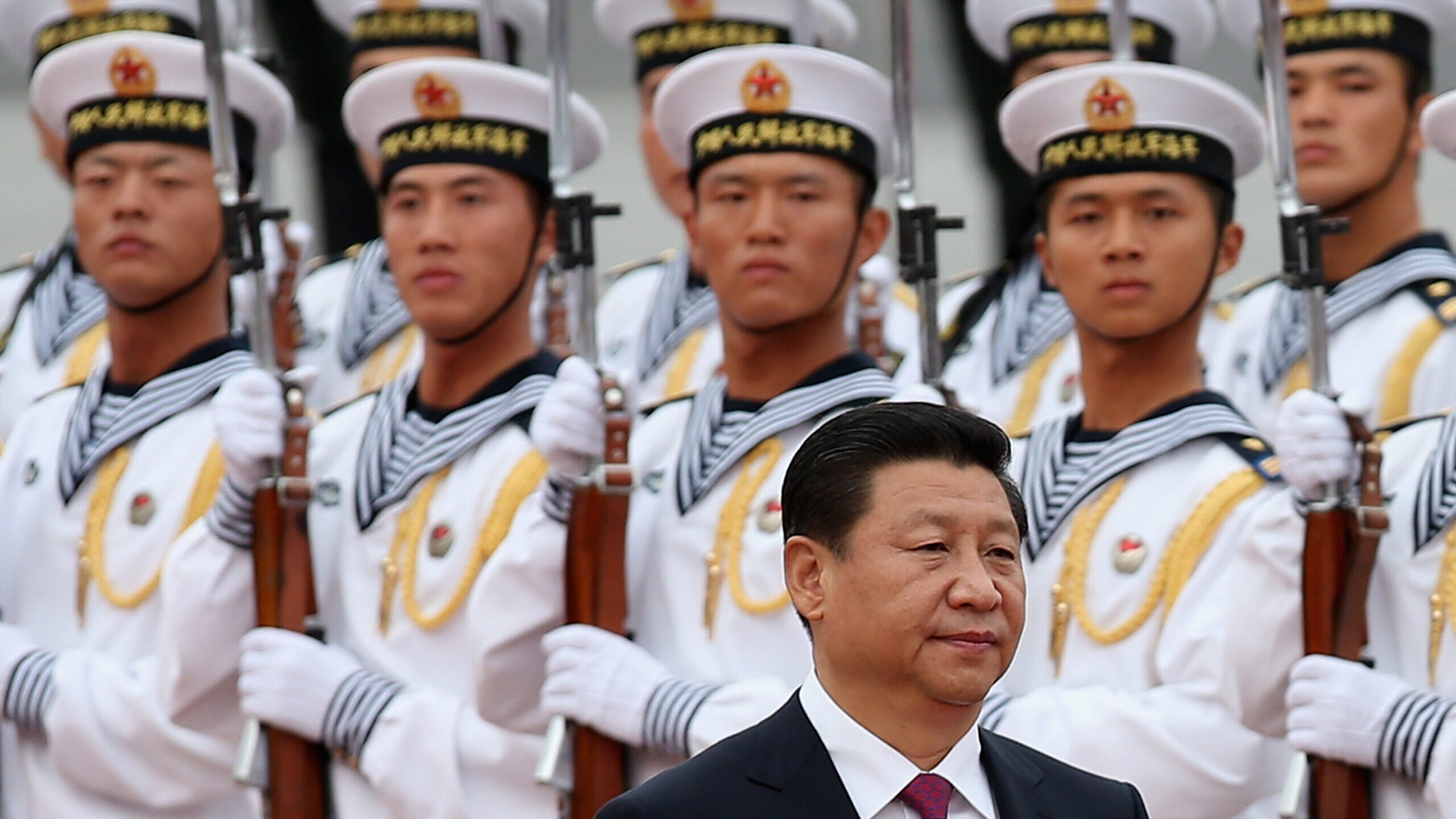
EDITOR’S NOTE 5/22/24 at 11:27 am ET: After the publication of this report, a spokesperson for the Office of Naval Intelligence said in a statement to Breaking Defense, “The Navy is aware of this PRC defense industry test and evaluation platform. While we will not comment on specifics, we closely monitor the capabilities of the PLA Navy and regularly consider any impacts to a free and open Indo-Pacific.” The spokesperson declined comment further.
SYDNEY — China has produced what experts say could be a small carrier dedicated to drones at the shipyard of Jiangsu Dayang Marine, a development that, if confirmed, would demonstrate what one PRC military analyst called the Chinese military’s “real ability to be flexible and innovative.”
The ship was revealed this week in a report by Naval News based on analysis by John Michael Dahm, a senior fellow at the Mitchell Institute for Aerospace Studies and a former US Navy intelligence officer. It is a catamaran, hardly a conventional choice for any kind of aircraft carrier, and Dahm conceded in an email to Breaking Defense that until the ship “is complete and operational, we probably won’t know its true purpose.”
But he also said that if it is a drone carrier — as his analysis concludes — the vessel “will allow the PLA Navy Blue Force to launch and recover fixed-wing drones at sea instead of the helicopter drones we’ve seen launched from ships thus far. The ship may contribute to test and evaluation of fixed-wing drone operations. This may support the eventual integration of drones onboard China’s new Type 075 Yushen-class amphibious assault ship.”
Dahm explained that in China, “The PLA is the ‘Red’ force while the ‘enemy’ or opposition force is the ‘Blue’ force.” That would indicate its use for experimentation and testing.
The Defense Intelligence Agency, which is charged with keeping an eye on foreign militaries, did not provide comment to Breaking Defense as of publication.
Dean Cheng, an expert on the Chinese military, told Breaking Defense he’s “not sure that it’s a drone carrier,” but assuming it is, he said it would be “yet another reminder that the PLA is a learning organization. It is willing to experiment, which is not what we associate with either authoritarian militaries, or the PLA.
“This is a PLA that chose to create a PLA Strategic Support Force. Then, was willing to kill it. In both cases, that entailed offending and fighting a lot of bureaucratic power,” he said in an email.
Cheng, a senior advisor on China at the United States Institute of Peace, wrote that Chinese leader Xi Jinping and his subordinates, “are demonstrating a real ability to be flexible and innovative. Not all innovation succeeds, but it’s the willingness to try that counts.”
Ja Ian Chong, a Chinese defense expert in Singapore, said the new ship may allow China to do “a lot of experimentation with not just technology but also tactics and strategies incorporating drones. In a way, this may parallel the 1920s and 1930s, which saw efforts to develop the aircraft carrier and the tactics surrounding them. The full effects of such drone carriers may yet to be discovered.”
All this comes in the context of the rapid expansion and modernization of the Chinese navy.
“U.S. military officials and other observers are expressing concern or alarm regarding the pace of China’s naval shipbuilding effort, the capacity of China’s shipbuilding industry compared with the capacity of the U.S. shipbuilding industry, and resulting trend lines regarding the relative sizes and capabilities of China’s navy and the U.S. Navy,” the latest Congressional Research Service report on the topic says. The PLAN has impressively outstripped the size of the US Navy, with its force of more than 370 ships compared to 292 for the US Navy.
Cheng pointed to the “worrisome” possibility that the PLAN “might well be thinking about drones differently, more innovatively, than we are.” Traditionally, the US has viewed drones as a supplement or augmentation to existing fixed-wing enterprises, while this ship may indicate the Chinese are pushing the flight envelope.